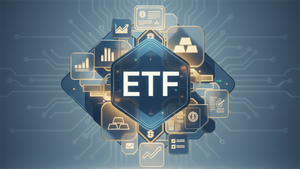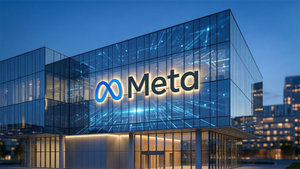
The financial world is gripped by a profound dichotomy: the intoxicating promise of Artificial Intelligence (AI) versus the unsettling specter of an unsustainable market bubble. As of November 2025, the "AI trade" has propelled a select group of technology companies to unprecedented valuations, fueling both fervent optimism and acute anxiety among investors. While AI's transformative potential is undeniable, concerns are mounting that the current "eye-watering valuations" may be detached from fundamental realities, raising questions about the sustainability of this meteoric rise and the potential for a sharp market correction.
This speculative frenzy, reminiscent of past tech booms, is characterized by a concentrated surge in capital towards a few dominant players, leading to significant market concentration and systemic risks. The immediate implications of these elevated valuations include the potential for massive downside exposure for investors, a heightened risk of disorderly market corrections, and warnings from financial regulators about the broader economic fallout should investor optimism wane. The debate rages on: is this merely the early stage of a revolutionary technological shift, or are we witnessing the formation of an AI bubble destined to pop?
The AI Trade: A Deep Dive into Unprecedented Valuations and Market Jitters
The "AI trade" has become the defining characteristic of the 2025 financial landscape, marked by an extraordinary surge in the valuations of companies perceived to be at the forefront of artificial intelligence. This phenomenon has been particularly concentrated, with a handful of leading AI tech firms, often dubbed the "Magnificent Seven," achieving valuation levels rarely seen in market history. Some of these companies are trading at price-to-earnings (P/E) multiples ranging from 300x to an astounding 700x, far exceeding traditional metrics of sustainable growth.
A significant milestone in this timeline occurred in November 2025, when Nvidia (NASDAQ: NVDA) made history by becoming the first publicly traded company to reach a staggering $5 trillion valuation, accounting for approximately 8% of the entire S&P 500 index. This concentration has sparked concerns about systemic risk, as the market's fortunes appear increasingly tied to the performance of a select few. The enthusiasm, however, has been punctuated by periods of significant "AI stock wobble." For instance, Palantir Technologies (NYSE: PLTR) saw its stock decline by 8% in November 2025, despite reporting stronger-than-expected earnings, as investors grappled with its lofty 700x earnings multiple. Similarly, shares of Advanced Micro Devices (NASDAQ: AMD) have experienced pullbacks amid renewed skepticism regarding their high valuations.
Adding to the complexity are dynamics such as "circular vendor financing," where major AI suppliers like Nvidia invest in their customers, who then use that capital to purchase more chips and services. Critics argue that this creates an artificial demand loop, potentially inflating valuations. The sheer scale of capital expenditure in AI is also remarkable; reports indicate that AI-related spending outpaced U.S. consumer spending as the primary driver of economic growth in the first half of 2025, contributing 1.1% to GDP growth. Yet, a Massachusetts Institute of Technology report in August 2025 revealed a stark reality: despite US$30–40 billion in enterprise investment into Generative AI, 95% of organizations were seeing zero return, highlighting a potential disconnect between investment and tangible outcomes. Hedge fund manager Michael Burry, famed for predicting the 2008 housing crisis, has notably placed bearish bets against Nvidia and Palantir, signaling a growing chorus of skepticism among seasoned investors.
Potential Winners and Losers in the AI Gold Rush
The AI stock market phenomenon presents a clear dichotomy of potential winners and losers, with the sustainability of current valuations dictating their ultimate fate. Companies that genuinely harness AI to drive efficiency, innovation, and substantial new revenue streams are poised to thrive, while those with inflated valuations based on speculative hype rather than tangible results face significant downside risk.
Nvidia (NASDAQ: NVDA) stands as the undisputed titan of the current AI era, having become the first publicly traded company to reach a staggering $5 trillion valuation in November 2025. Its dominance in AI chip manufacturing positions it as a critical enabler for virtually every AI endeavor. Should the AI revolution continue its trajectory, Nvidia's foundational role ensures its continued profitability. However, its "eye-watering valuation" and reliance on a concentrated customer base, sometimes through "circular vendor financing," make it highly susceptible to any market correction or shifts in the competitive landscape. Similarly, Advanced Micro Devices (NASDAQ: AMD) is a key player in the AI hardware space, competing with Nvidia. Its ability to innovate and capture market share in AI accelerators will determine its long-term success, but it also shares the risk of overvaluation.
On the software and application front, companies like Palantir Technologies (NYSE: PLTR), which provides AI-powered data analytics platforms, have seen their stock soar. While Palantir has demonstrated strong earnings, its P/E multiple of 700x in November 2025 raises serious questions about its ability to generate sufficient future profits to justify such a valuation. Other AI software and service providers, including those involved in generative AI like OpenAI (privately held, but with significant investor interest), are burning through capital at an extraordinary rate. While OpenAI generated billions in revenue in the first half of 2025, its loss-to-revenue ratio exceeded 300%, indicating a massive capital burn. These companies are betting on future widespread adoption and monetization, but if those returns don't materialize quickly enough, their high capital expenditures could lead to financial distress or significant revaluations.
Beyond the direct AI players, traditional tech giants like Microsoft (NASDAQ: MSFT), Google (NASDAQ: GOOGL), and Amazon (NASDAQ: AMZN) are heavily investing in AI infrastructure and integrating AI into their vast product ecosystems. Their diversified revenue streams and robust balance sheets provide a buffer against extreme volatility, positioning them as more resilient players that can absorb the costs of AI development and potentially benefit from its widespread application across various sectors. Conversely, smaller, less established AI startups with unproven business models and high cash burn rates are most vulnerable to a market downturn, as investor appetite for risk diminishes and access to capital becomes more constrained. The ultimate winners will be those who can translate AI innovation into sustainable, profitable business models, while those riding purely on speculative fervor risk being left behind.
The Broader Significance: Echoes of the Past and Future Implications
The current AI stock market dynamics carry a wider significance that extends far beyond individual stock performances, touching upon broader industry trends, potential regulatory interventions, and historical parallels that offer both caution and insight. This period is often compared to the dot-com bubble of the late 1990s, with similar characteristics of intense investor euphoria, "eye-watering valuations" detached from immediate profitability, and a concentration of wealth in a few leading technology companies. However, proponents argue that today's AI companies possess more robust underlying fundamentals and tangible products compared to many dot-com startups, suggesting a more sustainable foundation.
The "AI trade" fits into a broader industry trend of technological disruption, where artificial intelligence is poised to reshape virtually every sector, from healthcare and finance to manufacturing and entertainment. This transformative potential is driving massive capital expenditures, as companies race to build AI infrastructure and integrate AI capabilities. This race has significant ripple effects on competitors and partners; for instance, the intense demand for AI chips from Nvidia and AMD creates opportunities for their suppliers but also puts immense pressure on rivals to keep pace. The massive energy requirements for AI data centers are also emerging as a critical bottleneck, raising concerns about infrastructure scalability and environmental impact, which could influence long-term growth trajectories.
Regulatory and policy implications are also coming into sharper focus. Governments worldwide are grappling with how to regulate AI's development and deployment, addressing concerns around ethics, privacy, job displacement, and market dominance. There's a growing possibility of antitrust scrutiny for the dominant AI players, especially given the market concentration. Financial regulators, including the Monetary Authority of Singapore (MAS) and the Bank of England, have already issued warnings about the potential for "disorderly corrections" in the broader equity market if AI optimism retrenches, highlighting the systemic risk posed by the current valuations and the increasing reliance on debt-driven operations and private credit in the AI funding landscape. These warnings suggest that policymakers are keenly observing the situation and may intervene if market stability is threatened.
Historically, periods of rapid technological advancement have often been accompanied by speculative bubbles. While AI's genuine transformative power distinguishes it from some past manias, the sheer speed of valuation growth and the disconnect between investment and immediate returns (as highlighted by the MIT report on Generative AI) serve as potent reminders of the dot-com era. The challenge lies in discerning genuine innovation and sustainable growth from speculative excess, a task made more difficult by the complexity and rapid evolution of AI technology itself.
What Comes Next: Navigating the AI Crossroads
The path forward for the AI stock market is fraught with both immense opportunity and significant peril, making the next few months and years critical for investors and companies alike. In the short term, the market is likely to remain highly volatile, characterized by continued "AI stock wobble" as investors digest earnings reports, technological breakthroughs, and shifts in sentiment. We could see further sharp corrections in overvalued stocks as profit-taking continues and the market attempts to rationalize valuations. However, any significant dips may also be met with renewed buying interest from those who believe in AI's long-term potential, creating a dynamic of rapid swings.
Long-term possibilities include a sustained period of innovation and growth, where AI truly transforms industries and generates substantial, widespread returns, thereby justifying some of the higher valuations. This scenario would likely see a broadening of the "AI trade" beyond the current handful of dominant players, as more companies successfully integrate AI into their operations and develop profitable AI-powered products and services. However, a less optimistic scenario involves a more pronounced "AI bubble" burst, leading to a significant market downturn, particularly for companies whose valuations are not underpinned by strong fundamentals or clear paths to profitability. This could result in a period of retrenchment, consolidation, and a more cautious approach to AI investments.
Strategic pivots and adaptations will be crucial for companies navigating this landscape. AI firms must focus relentlessly on translating technological prowess into tangible, measurable returns and sustainable business models, moving beyond the current high capital burn rates. Diversification of revenue streams, efficient capital deployment, and a clear articulation of competitive advantages will be paramount. For investors, this means a shift from speculative "fear of missing out" (FOMO) investing to a more disciplined, fundamentals-driven approach, carefully scrutinizing balance sheets, cash flows, and realistic growth projections.
Market opportunities may emerge in less visible segments of the AI ecosystem, such as specialized AI infrastructure, ethical AI solutions, and AI applications tailored for specific niche industries. These areas might offer more sustainable growth prospects away from the intense spotlight and speculative pressures of the mega-cap AI stocks. Challenges will include navigating increasing regulatory scrutiny, managing the massive energy and infrastructure demands of AI, and addressing the geopolitical risks associated with critical AI components like advanced chips. Potential scenarios range from a "soft landing" where valuations gradually normalize without a catastrophic crash, to a "hard landing" resembling the dot-com bust, requiring significant time for market recovery and a re-evaluation of the entire AI investment thesis.
Wrap-up: Navigating the AI Frontier with Caution and Conviction
The current state of the AI stock market represents a pivotal moment in financial history, characterized by both groundbreaking innovation and profound market uncertainty. The "AI trade" has undeniably unleashed unprecedented technological advancements and created immense wealth for some, yet the "eye-watering valuations" and recent "AI stock wobble" serve as stark reminders of the inherent risks. Key takeaways from this period include the extreme concentration of market value in a few AI giants, the significant capital expenditures driving AI development, and the growing disconnect between investment and immediate, tangible returns for many enterprises.
Moving forward, the market is likely to remain highly sensitive to news regarding AI breakthroughs, earnings reports, and macroeconomic indicators. Investors should prepare for continued volatility and the possibility of further corrections, particularly for companies whose valuations rely heavily on future speculative growth rather than current profitability. The ultimate sustainability of current valuations hinges on the AI sector's ability to transition from a phase of massive investment and technological promise to one of widespread, profitable application.
For investors, the coming months will demand a discerning eye. It is crucial to look beyond the hype and focus on companies with robust business models, strong balance sheets, clear paths to profitability, and a demonstrated ability to generate returns from their AI investments. Diversification, thorough due diligence, and a long-term perspective will be invaluable. Watch for signs of genuine revenue growth, improving margins, and the successful integration of AI into diverse industries. Pay close attention to regulatory developments, infrastructure constraints, and the evolution of the competitive landscape, as these factors will significantly shape the future trajectory of the AI frontier. The AI revolution is undoubtedly here, but navigating its financial implications requires both conviction in its power and a healthy dose of caution regarding its current market valuation.
This content is intended for informational purposes only and is not financial advice





